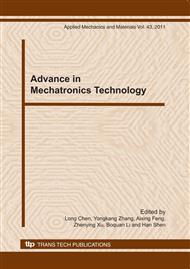p.207
p.211
p.217
p.221
p.225
p.229
p.233
p.238
p.242
Identification of Inertial Parameters of Heavy Truck Powertrains
Abstract:
Based on the quality of line frequency response function and the principle of rigid body micro-vibration, a technique was proposed to verify the experimental accuracy for the heavy truck powertrain by using rigid body inertia tensor transformation and additive theory. The measurement of inertial parameters of a heavy truck powertrain was carried out by hammer method. The total least square processing theory was proposed to process the experimental data. The experimental results showed satisfactory accuracy and reliability.
Info:
Periodical:
Pages:
225-228
Citation:
Online since:
December 2010
Authors:
Price:
Сopyright:
© 2011 Trans Tech Publications Ltd. All Rights Reserved
Share:
Citation:


